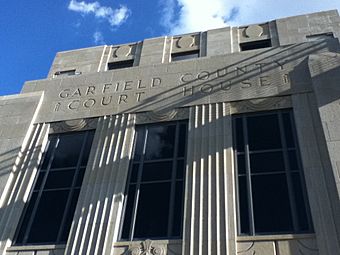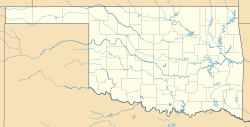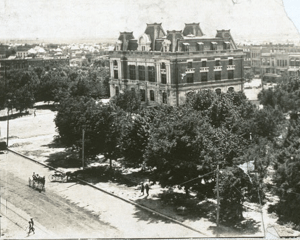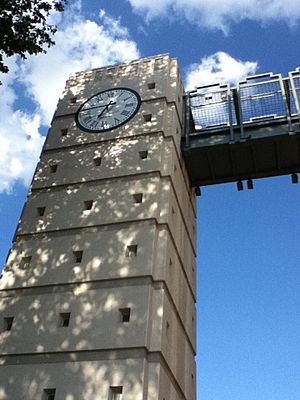Garfield County Courthouse (Oklahoma) facts for kids
Quick facts for kids |
|
|
Garfield County Courthouse
|
|
 |
|
| Location | W. Broadway, Enid, Oklahoma |
|---|---|
| Area | 1 acre (0.40 ha) |
| Built | 1930 |
| Architect | Reinhart & Donovan Co.; Hawk & Parr |
| MPS | County Courthouses of Oklahoma TR |
| NRHP reference No. | 84003018 |
| Added to NRHP | August 23, 1984 |
The Garfield County Courthouse is a special historic building in Enid, Oklahoma. It's where important county business and court cases happen. This building is so important that it's listed on the National Register of Historic Places. This means it's recognized as a very important part of American history. It's also part of the larger Enid Downtown Historic District.
Contents
Early Courthouses in Enid
Enid's first courthouse opened its doors on April 1, 1896. It was a two-story brick building. However, Garfield County quickly grew, and the building became too small.
So, a second courthouse was built in 1907. It was made from strong Oklahoma granite and Indiana stone. This grand building stood in the middle of Broadway, surrounded by nice sidewalks and gardens.
A Fire and a New Home
On January 29, 1931, a fire started in the jail area of the second courthouse. The fire quickly spread through the building. Luckily, everyone in the jail was safely moved out. Also, important county papers and records were saved from the flames.
After the fire, the county needed a new place to work. From 1931 to 1936, county offices moved around. They used an agricultural building for a while. Later, they even worked from the Broadway Tower.
The Current Courthouse Building
The courthouse you see today is built in a cool style called Art Deco. Construction started on August 15, 1934. It was finished in 1936. The companies Hawk & Parr and Reinhart & Donovan built this impressive structure.
What's Inside the Courthouse?
The Garfield County Courthouse has many different parts. County offices and courtrooms are on the basement level and the first three floors. This is where county leaders work and where legal cases are heard. The top two floors are home to the Garfield County Jail. The jail area was updated in the 1960s.
Art and History on the Walls
The courthouse is also home to some amazing art. The Works Progress Administration Federal Art Project helped fund these artworks. Artist Ruth Augur painted murals on the courthouse walls that show historical scenes. Later, in 1996, two talented artists from Enid, Paladine Roye and his brother Burgess Roye, added more murals. Their paintings tell stories about Native American history.





